First published 100 years ago this year, this article reported on the changes that came about following the grouping of 120 small companies into four big companies – and coined the nickname “The Big Four”!
Read the article as it was originally published, and enjoy just one of many fascinating pieces of railway history from The Railway Magazine.
And if you want to be there for all the future BIG railway moments, why not subscribe to The Railway Magazine? We’re even marking the anniversary with a BIG saving…
Inaugurating the new railway situation in Great Britain
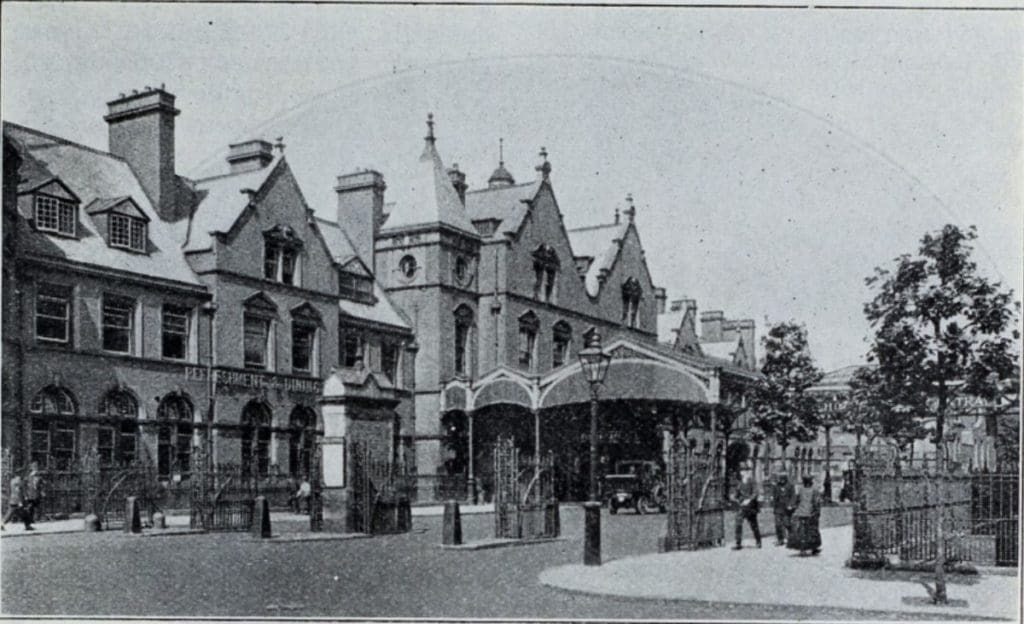
As from January 1, 1923, nearly all the railways which have for so been long supplied the railway transportation needs of Great Britain, have come within the all-embracing scope of one or other of the four “great” companies ordained by the Railways Act of 1921. As a result, the entire railway situation is radically altered, many of the famous “frontier” stations have lost their importance altogether, or merely retain it in a very much reduced and almost incidental form, while railway directorates and officiates are being set up, differing essentially from those of the immediate past, not a few well-known directors and officers passing into well-earned “retirement,” while others appear with new and greater responsibilities.
Speaking generally, it is substantially correct to say that, so far, only the combinations of the grouped companies, the formation of the new companies, and the directorates and chief officials concerned with ” company” aspects, have yet completed as far as practicable. Even in this connection, certain amalgamations have yet to be dealt with, and the final schemes submitted for the approval of the Ministry of Transport. Matters are, however, sufficiently advanced to enable the component railways, both “constituent” and “subsidiary,” to operate on a combined basis as from January 1, 1923, while a number of both permanent and interim appointments have been made, indicating the prospective organisation. Associated, are a number of retirements of well-known chief officers, and in the aggregate so· many developments associated with railway “personnel” have to be recorded, that it is thought best to cover the whole ground in this article, instead of dealing with them individually in the ” Railway Portrait Gallery,” or “What the Railways are Doing.” A number of portraits are reproduced, and others will be given in later issues. At the same time, although grouping procedure has received attention, stage by stage, the outstanding features of the new railway situation may also be set forth.
I.-LONDON MIDLAND AND SCOTTISH.
In this group the London and North Western and Lancashire and Yorkshire Railways were amalgamated as from January 1, 1922, and as we go to press, arrangements for the amalgamation of the North Staffordshire are in process of completion, while in regard to the Caledonian Railway, final stages are also incomplete. Arrangements are, however, sufficiently advanced for the companies concerned to be combined for operating substantially as one concern from January 1, 1923, and the organisation referred to below, though announced as of an interim character, is on that basis.
Constituent Companies.- London and North Western (including Lancashire and Yorkshire, amalgamated from January 1, 1922), 2,667½ miles; Midland, 2, 170¾ miles; North Staffordshire, 220¾ miles ; Furness, 158 miles ; Caledonian, 1, 114½ – miles ; Glasgow and South Western, 493½ miles; Highland, 506 miles.
Subsidiary Companies.-(a) Independently operated lines: Cleator and Workington Junction, 30½ miles, partially worked by Furness Railway; Knott End, 11½ miles; North London, 16 miles (managed by London and North Western Railway); Stratford-upon-Avon and Midland Junction, 67½ miles; Wirral, 13¾ miles.
(b) Independent lines for which rolling-stock, &c., was provided by other companies: Cockermouth, Keswick and Penrith, 30¾ miles, London and North Western and North Eastern Railways.
(c) Non-Working Companies: (1) Originally leased to or worked by the London and North Western Railway: Charnwood Forest, 10½ miles; Dearne Valley, 21 miles; Harborne 2½ miles; Mold and Denbigh Junction, 15 miles; Shropshire Union Railways and Canal, 29¼ miles (part of this system was jointly leased with the Great Western Railway). (2) Originally leased to or worked by the Midland Railway: Tottenham and Forest Gate, 6 miles ; Yorkshire Dales (Skipton to Grassington), 9 miles. (3) Originally leased to or worked by the Caledonian Railway: Arbroath and Forfar, 14¾ miles; Brechin and Edzell District, 6¼ miles ; Callander and Oban, 99¾ miles; Dundee and Newtyle, 14½ miles; Killin, 5¼ miles; Lanarkshire and Ayrshire, 36¼ miles; Solway Junction, 12¼ miles. (4) Originally leased to or worked by the Highland Railway : Dornoch Light, 7¾ miles ; Wick and Lybster Light, 13½ miles. (5) Originally leased to or worked by the North Staffordshire Railway : Leek and Manifold (narrow gauge), 8¼ miles. (6) Originally leased to or worked by several component companies: North and South Western Junction, 5¼ miles; Portpatrick and Wigtownshire Joint, 82¼ miles.
Joint Railways (total mileages stated, shares thereof included above).-(a) Now comprised wholly in the London Midland and Scottish Railway: Ashby and Nuneaton, 29¼ miles ; Carlisle Citadel Station and Goods Traffic Joint Committees; Enderby, 2¾ miles; Furness and :Midland, 9¾ miles; Glasgow, Barrhead and Kilmarnock Joint, 29¾ miles; Glasgow and Paisley, 14¼ miles ; Lancashire Union, 12¾ miles; Whitehaven, Cleator and Egremont, 35 miles; North Union, 6½ miles ; Preston and Longridge, 8 miles ; Preston and Wyre, 46 miles.
(b) Joint with London and North Eastern Railway: Axholme Joint, 27¾ miles; Cheshire Lines Committee, 142 miles (one third share); Dumbarton and Balloch (including Loch Lomond steamers), 7 miles; Dundee and Arbroath (including Carmyllie Light Railway), 23 miles; Great Central and Midland Joint, 40¼ miles; Great Central, Hull and Barnsley and Midland Joint (one-third share), 4 miles; Great Central and North Staffordshire, 11 miles ; Great Northern and London and North Western, 45 miles; Halifax and Ovenden, 2½ miles ; Halifax High Level, 3 miles ; Manchester, South Junction and Altrincham, 9½ miles, really a joint working arrangement; Methley, 6 miles ; Midland and Great Northern Joint, 183¼ miles; Norfolk and Suffolk Joint Committee, 22¼ miles (Great Eastern and Midland and Great Northern Joint) ; Oldham, Ashton and Guide Bridge, 6¼ miles ; Otley and Ilkley, 6¼ miles ; Perth General Station Committee (two-thirds share); Prince’s Dock, Glasgow, 1¼ miles; South Yorkshire Joint, 20½ miles (two-fifths share) ; Swinton and Knottingley, 19½ miles; Tottenham and Hampstead, 4¾ miles.
(c) Joint with Great Western Railway : Birkenhead, 56½ miles ; Brecon and Merthyr, and London and North Western Joint, 6 miles; Brynmawr and Western Valleys, 1¼ miles ; Clee Hill, 6 miles ; Clifton Extension, 9 miles ; Halesowen, 6 miles; Nantybwch and Rhymney, 3 miles; Quaker’s Yard and Merthyr, 6 miles ; Severn and Wye, 39 miles ; Shrewsbury and Hereford, 82¾ miles; Taff Bargoed, 11 miles; Tenbury, 5 miles; Vale of Towy, 11 miles, owned by London and North Western, but leased jointly; West London 2¼ miles; Wrexham and Minera, 3 miles.
(d) Joint with Southern Railway: Somerset and Dorset, 105 miles.
(e) Joint with Great Western and Southern Railways: West London Extension, 5¼ miles (quarter share).
(f) Joint with Metropolitan District Railway : Whitechapel and Bow, 2 miles.
Irish Lines.-Dundalk, Newry and Greenore, 26½ miles ; Northern Counties Committee’s lines, 265¼ miles; Joint Midland and Great Northern of Ireland, 91 miles.
Principal statistics consequent upon the completion of grouping are :-Route mileage, 7,790; track mileage (including sidings), 20,100; tender locomotives, 7,000; tank engines, 3,400 ; coaching vehicles, 27,000; freight vehicles, 315,000; service vehicles, 22,300 ; electric rolling-stock, 550; rail motor cars, 32.
The new company has 67 turbine and screw steamers and a number of smaller vessels, lake steamers, &c. ; docks, harbours, wharves, &c., at Barrow-in-Furness, Fleetwood, Garston, Grangemouth, Heysham, Holyhead, Morecambe, Ayr, Alloa, Bristol, Fairlie, Gourock, Largs, London and Tilbury, Renfrew, Troon, Wemyss Bay, Widnes and other places ; and 36 modern hotels, mostly of large size and ranking as principal hotels in the towns served.
The new directorate is as follows :-Chairman, Hon. C. N. Lawrence (London & North Western Railway); Deputy Chairmen, Sir Guy Granet (Midland Railway) and Mr. E. B. Fielden (London and North Western Railway). From the London and North Western Railway : Messrs. W. E. Dorrington ; Hon. A. H. Holland-Hibbert ; W. L. Hichens; J. B. Ismay; J. H. Kaye; G. Macpherson; Sir Thomas Roydon, Bart, C.H.; Sir E. F. Stockton, M.P. ; Mr. G. R. T. Taylor; Sir Thomas Williams. From the Midland Railway: Sir J. F. Beale, KB.E. ; Sir A. G. Anderson, K.B.E.; Messrs. G. Behrens and C. Booth; General. Hon. Sir H. A. Lawrence, K.C.B.; Messrs. D. Vickers and A. H. Wiggin. From the Furness Railway: Mr. F. J. Ramsden. From the Glasgow and South Western Railway : Mr. C. Ker. From the Highland Railway: Mr. A. E. Pullar. There are five vacancies in the total of 28 permitted by the Railways Act, 1921. Appointments from the Caledonian and North Staffordshire Railways have yet to be made.

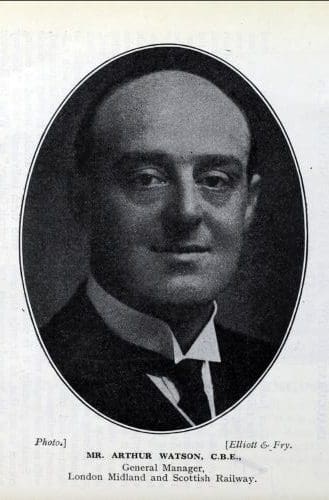
The interim organisation set up and already in operation covers the Caledonian and North Staffordshire sections, as well as the railways in regard to which arrangements had been completed before the end of last year. Thus, while Mr. Arthur Watson is, as anticipated, General Manager, Mr. D. A. Matheson, General Manager of the Caledonian Railway, takes the title of Deputy General Manager for Scotland, while the department of the Secretary to the new company, Mr. R. C. Irwin, includes Mr. J. J. Raining (Caledonian Railway) as Secretary to Scottish Local Committee and Treasurer (Northern Division). Mr. Watson has as principal assistant, Mr. H. G. Burgess (London & North Western Railway), and seven other assistants, Messrs. H. Marriott, J. Pike, T. A. Kenyon, Glynne Roberts and W. E. Preston from the London and North Western Railway, together with Messrs. W. Clower and H. V. Mosley, late Assistant General Managers, Midland Railway. In the Secretary’s Department, the assistants, in addition to Mr. Raining, are Messrs. M. M. Parkes, C. Chittey, G. Kick and R. C. Willis. Special interest attaches to the Chief General Superintendent’s Department. Three divisions are set up: Western (including the old London and North Western and Lancashire and Yorkshire Railways, and constituent and subsidiary lines within the area of those lines) ; Midland (the late Midland system with subsidiary lines); and Northern (Scottish lines and Northern Counties system in Ireland). In connection with the setting up of these divisions, all traffic matters are dealt with by this department, the Chief Goods Manager being concerned only with commercial aspects, except for mineral traffic. Mr. J. H. Follows, the well-known General Superintendent of the Midland Railway, becomes Chief General Superintendent; Mr. Ashton Davies is General Superintendent (Western Division) ; Mr. R. Killin goes from the Caledonian Railway to Derby as General Superintendent (Midland Division) ; and Mr. J. Ballantyne, also Caledonian Railway, is General Superintendent (Northern Division). Mr. C. R. Byrom is General Superintendent (Passenger Commercial). Mr. F. W. Dingley is Superintendent of Motive Power (old London and North Western Railway), and Mr. Follows is further assisted by Messrs. J. E. Anderson, T. Redhead, H. E. Horne, J. Thompson, W. Sargent and F. Ruffell. Under Mr. Ashton Davies, :Mr. T. W. Royle is Assistant General Superintendent (Western Division). Under Mr. Killin, Mr. J. Murray is Assistant General Superintendent (Midland Division). Mr. Ballantyne is assisted by Messrs. M. S. Spier and W. Armstrong, as Assistants to General Superintendent respectively for the Caledonian and Glasgow and South Western sections. The Chief Goods Manager’s Department under Mr. S. H. Hunt (L. & N.W.R.) deals almost exclusively with commercial aspects. There are four Divisional Goods Managers : Midland, Mr. H. F. Loney (M.R.), Derby; London, Mr. W. A. Ree (L. & N.W.R.) ; Manchester, Mr. W. A. Marsden (L. & N.W.R.); and Northern, Mr. J. Robinson (G. & S.W.R.). Commercial aspects of mineral traffic are, however, dealt with by the Mineral Department, Mr. A. W. Allen (M.R.) being Mineral Manager and Mr. E. Wharton (L. & N.W.R.), Assistant Mineral Manager. Mr. E. F. C. Trench (L. & N.W.R.) is Chief Engineer of the new company, assisted by two divisional engineers, one for permanent way, present Division “A,” Mr. W. H. Williams (L. & N.W.R.); and the other for the present Division “B,” Mr. W. H. Coomber (L. & N.W.R.), and four divisional engineers for other sections: Midland, Mr. H. P. Miles (M.R.); Northern,. Mr. D. McLellan (C.R.); North Staffordshire Section, Mr. C. G. Rose (N.S.R.) ; and Furness Section, Mr. D. L. Rutherford (F.R.)


In the Chief Mechanical and Electrical Engineers’ Department, Mr. G. Hughes (L. & N.W.R.) becomes Chief Mechanical and Electrical Engineer, and Sir Henry Fowler (M.R.), Deputy Chief :Mechanical Engineer. Mr. H. E. O’Brien is Electrical Engineer, while Sir Henry Fowler and Messrs. H. P. M. Beames, G. N. Shawcross, J. A. Hookham, W. Pickersgill, R. H. Whitelegg and D. C. Urie, remain in charge as Mechanical Engineers respectively at Derby, Crewe, Horwich, Stoke-on-Trent, Glasgow (St. Rollox), Kilmarnock and Inverness, a corresponding appointment at Barrow-in-Furness not yet being filled. The Carriage and Wagon Department is similarly organised, Mr. R. W. Reid (M.R.) being Carriage and Wagon Superintendent; with Divisional Carriage Superintendents at Wolverton, Mr. A. R. Trevithick; Earlestown, Mr W. W. H. Warneford ; and Newton Heath (Manchester), Mr. F. E. Gobey.
Two Joint Accountants have been appointed, Mr. J. F. Gee (L. & N.W.R.), and Mr. J. Quirey (M.R.), both now at Euston; with three Divisional Accountants: (1) Derby (addressed officially without name, this being Mr. Quirey’s late department) ; (2) Manchester, Mr. Vernon Gee (L. & N.W.R.); (3) Glasgow, Mr. J. Vallance (G. & S.W.R.). Mr. F. G. Evans (L. & N.W.R.) is Audit Accountant, with Divisional Audit Accountants at Euston, Mr. G. Morton; Derby, Mr. G. H. Doughty; Manchester, Mr. W. Holmes; and Northern, Mr. J. Murray (C.R.). Mr. J. R. Ball (L. & N.W.R.) is Land and Estate Agent, with two Divisional Land and Estate Agents : Midland, Mr. H. C. Clay ; Manchester, Mr. W. Sadler. Mr. P. M. Payne (M.R.) is Rating Agent, at Derby, with Mr. H. J. Burcham (L. & N.W.R.) as Divisional Rating Agent, London; and Mr. S. W. Beason (L. & N.W.R.), Manchester. The Stores Department is under four Divisional Storekeepers : present Division “A,” Mr. F. D. Stones, Euston ; Midland, Mr. T. H. Ward, Derby; present Division ” B,” Mr. F. S. Sharp, Manchester; Northern, Mr. A. J. Easton, Glasgow (C.R.) Also a District Storekeeper at St. Helens, Mr. G. J. Chesters. Hotels and Refreshment Rooms in England are now in charge, as before, of Mr. S. W. Burleigh at Euston ; Mr. A. E. Towle at St. Pancras; and Mr. G. O’B. Hamilton, Liverpool. In Scotland the department is under the immediate supervision of the Deputy General Manager (for Scotland).
It will therefore be seen that, so far, the only drastic changes are those necessary to enable the component sections to be co-ordinated and to indicate the allocation of authority. Otherwise the appointments continue the old responsibilities as modified by the new conditions, though in due course many of them will pave the way for the final organisation, which can only be set up when amalgamation details are completed and some experience of unified working has been obtained. The following lines are included in the respective divisions :-Western-London and North Western (including the late Lancashire and Yorkshire), North Staffordshire, Furness, Cleator and Workington Junction, Dearne Valley, Dundalk, Newry and Greenore, Mold and Denbigh Junction, North and South Western Junction, North London, and Shropshire Union. Midland :-Midland (including Tilbury section), S.M.J., Tottenham and Forest Gate, and Yorkshire Dales. Northern :-all the Scottish companies, and the Belfast and Northern Counties (Mr. J. Pepper, Manager and Secretary), in Ireland.
II. – LONDON AND NORTH EASTERN.
All except ” subsidiary ” amalgamations and final procedure are virtually completed, and this railway has been operated as a single concern since January 1, 1923, except that the Hull and Barnsley was amalgamated with the North Eastern Railway from April I, 1922. Constituent Companies.-North Eastern. 1,757¾ miles; Great Central, 852½ miles; Great Eastern, 1,191¼ miles; Great Northern, 1,051¼miles; Hull and Barnsley, 106½ miles; North British, 1,378 miles; Great North of Scotland, 334½ miles.
Subsidiary Companies.-(a) Independently operated lines : Colne Valley and Halstead, 19 miles; East and West Yorkshire Union, 9¼ miles ; Mid-Suffolk Light, 19½ miles. (b) Non-Working Companies: (1) Originally leased to or worked by the North Eastern Railway: Brackenhill Light; Forcett, 5½ miles; Great North of England, Clarence and Hartlepool Junction, 6¾ miles. (2) Originally leased to or worked by the Great Central Railway : Humber Commercial Railway and Dock; Mansfield, 10 miles ; North Lindsey Light, 12 miles ; Seaforth and Sefton Junction ; Sheffield District, 4¼ miles. (3) Originally leased to or worked by the Great Eastern Railway : London and Blackwall, 6 miles. (4) Originally leased to or worked by the Great Northern Railway: East Lincolnshire Railway, 4 7 ½ miles ; Horncastle, 7 ½ miles; Nottingham and Grantham Railway and Canal, 23 miles; Nottingham Suburban, 4 miles; Stamford and Essendine: 12½ miles. (5) Originally leased to or worked by the North British Railway: Edinburgh and Bathgate, 10¼ miles; Forth and Clyde Junction, 30½ miles ; Gifford and Garvald, 9¼ miles; Kilsyth and Bonnybridge, 8½ miles, worked jointly with Caledonian Railway ; Lauder Light, 10¼ miles; Newburgh and North Fife, 13¼ miles. (6) Originally leased to or worked by the Hull and Barnsley Railway: South Yorkshire Junction, 11 ½ miles. (7) Originally leased to or worked by several constituent companies: Nottingham Joint Station Committee; West Riding Railway Committee, 32½ miles.
Joint Railways (total mileages stated, shares thereof included above).-(a) Now comprised wholly in the London and North Eastern Railway : Great Northern and Great Eastern Joint, 123 miles ; Hull and Barnsley and Great Central, 25¾ miles.
(b) Joint with London Midland and Scottish Railway: Axholme Joint, 27 ¾ miles ; Cheshire Lines Committee (two-thirds share), 142 miles ; Dumbarton and Balloch (including Loch Lomond steamers), 7 miles; Dundee and Arbroath (including Carmyllie Light Railway), 23 miles; Great Central and Midland Joint, 40¼ miles; Great Central Hull and Barnsley and Midland Joint (two-thirds share), 4 miles; Great Central and North Staffordshire Joint, 11 miles; Great Northern and London and North Western, 45 miles ; Halifax and Ovenden, 2½ miles ; Halifax High Level, 3 miles; Manchester, South Junction and Altrincham, 9½ miles, really a joint working arrangement; Methley (two-thirds share), 6 miles; Midland and Great Northern Joint, 183¼ miles ; Norfolk and Suffolk Joint Committee, 22¼ miles (Great Eastern, and Midland and Great Northern Joint); Oldham, Ashton and Guide Bridge, 6¼ miles ; Otley and Ilkley, 6¼ miles; Perth General Station Committee (one-third share) ; Prince’s Dock, Glasgow (one-third share), 1¼ miles ; South Yorkshire Joint (three-fifths share), 20½ miles; Swinton and Knottingley, 19½ miles; Tottenham and Hampstead, 4¾ miles.
(c) Joint with Great Western Railway: Great Western and Great Central Joint, 41 miles.
(d) Jointly leased or worked with several railways : East London ( one-sixth share with Southern, three-sixths share, and Metropolitan and Metropolitan District), 5 miles.
Principal statistics are :-Route mileage, 6,590 ; track mileage (including sidings), 17,500; tender locomotives, 4,900 ; tank engines, 2,800 ; coaching vehicles, 20,000; freight vehicles, 297,000; service vehicles, 16,500; electric rolling-stock, 140; and electric locomotives, 13; rail motor cars, 10. Also 6 turbine and 16 other large steamers, 36 other steamers and a number of river boats, lake steamers, motor boats, &c ; 295 miles of canals ; docks, harbours, &c., at Alloa, Bo’ness, Charlestown, Connah’s Quay, Grimsby, Harwich, Hull, Hartlepool and West Hartlepool, Immingham, London, Lowestoft, Methil, Middlesborough, New Holland, Silloth, South Shields, Sunderland and Tayport ; and wharves, staiths, &c., at Blyth, Boston, Chatteris, Gainsborough, Holme, Hull, Keadby, Lincoln, Misterton, Percy Main, Surfleet, Wakefield, Winteringham Haven, and London (Limehouse, Marylebone, &c.); piers at Craigendoran, Mallaig, North and South Queensferry, Tayport, &c. ; and 23 modern hotels.
The new directorate is composed as follows :-Chairman, Mr. W. Whitelaw (N.B.R.); Deputy Chairman, Rt. Hon. Lord Faringdon (G.C.R.) ; Appointed by the North Eastern Railway : Rt. Hon. Lord Joicey; Sir Hugh Bell, Bart, C.B.; Rt. Hon. Viscount Grey of Fallodon, K.G. ; Mr. J. H. B. Noble ; Sir Arthur F. Pease, Bart; Mr. O. Sanderson; Col. C. W. Trotter (from the Hull and Barnsley Railway) ; and Messrs. M. J. Wilson, M.P., and W. K. Whigham. From the Great Northern Railway : Hon. Rupert E. Beckett; Mr. O. R. H. Bury; Lieut.- Col. B. A. Firth ; and Mr. F. L. Steel. From the Great Central Railway : in addition to Lord Faringdon, Messrs. W. B. Gair and E. A. Beazley, and the Hon. E. B. Butler-Henderson. Appointed by the Great Eastern Railway : Rt. Hon. Lord Ailwyn, P.C., K.C.V.O., K.B.E. ; Col. W. J. Galloway; Sir Eric Hambro; and Mr. H. T. Bailey. Appointed by the North British Railway: in addition to Mr. Whitelaw, Messrs. A. R. Gray and A. K. McCosh; and Lieut.-Col. Hon. A. C. Murray, C.M.G., D.S.O., M.P. Appointed by the Great North of Scotland Railway : Mr. A. Duffus. The total directorate provided for is 28, so that there are two vacancies at present.
So far, although the London and North Eastern Railway is definitely operated as such, only certain chief appointments have yet been announced. Marylebone station has been selected as the headquarters, departments being located in the late chief office buildings.
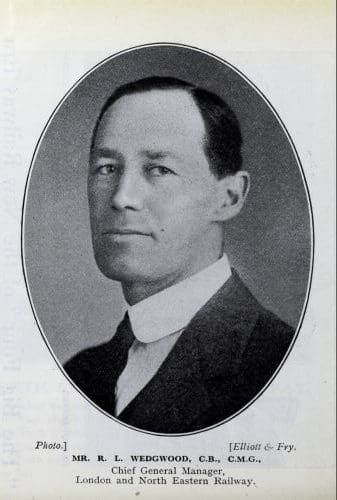
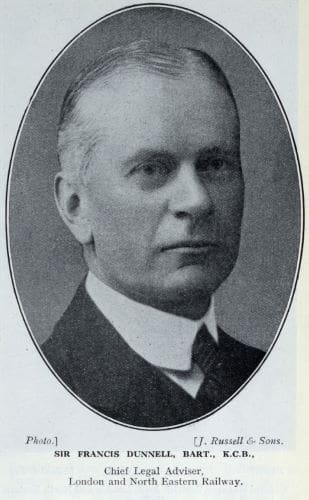
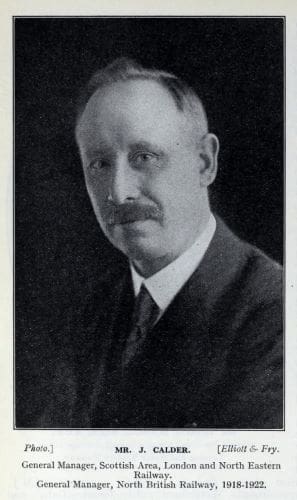
Mr. R. L. Wedgwood, late General Manager of the North Eastern Railway, is Chief General Manager, with Mr. R. Bell (N.E.R.) as Assistant General Manager, and Mr. K. Kerr (N.E.R.) Assistant General Manager (Staff). Mr. J. Calder, General Manager, North British Railway, is General Manager (Scottish Area). The English lines come under the immediate supervision of Mr. A. Wilson (N.E.R.), Divisional General Manager (North Eastern Area), and Mr. S. A. Parnwell (G.E.R.) is Divisional General Manager (Southern Area). On the traffic side, Mr. W. Clow (G.C.R.) is Superintendent (Southern Area), and Mr. C. J. Selway (G.N.R.), Passenger Manager (Southern Area), and we gather that Mr. C. H. Stemp (N.B.R.) is Superintendent of the Southern Scottish Area and Mr. W. Johnston (G.N.S.R.), Superintendent of the Northern Scottish Area.

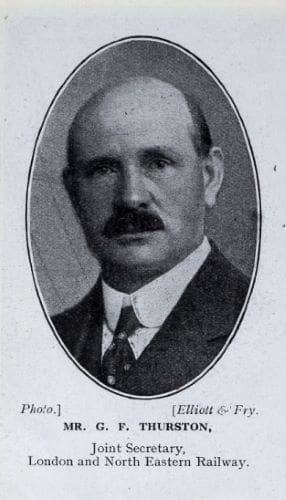

Two Joint Secretaries have been appointed, Mr. J. McLaren (N.B.R.) and Mr. G. F. Thurston (G.E.R.), while Mr. J. A. Campbell (G.C.R.), is Registrar. Mr. C. L. Edwards (G.N.R.) has been appointed Chief Accountant. Sir Francis Dunnell, (N.E.R.) is Chief Legal Adviser; Mr. T. Chew (G.E.R.) is Solicitor (particular Legal Work) ; Mr. G. Davidson, late General Manager and Solicitor (G.N.S.R.), Solicitor (Scottish). Mr. H. R. Cripps, from the Ministry of Transport, is Chief Assistant Solicitor.

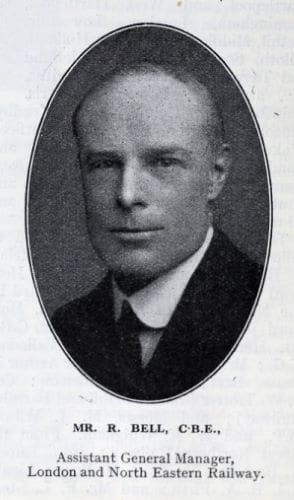
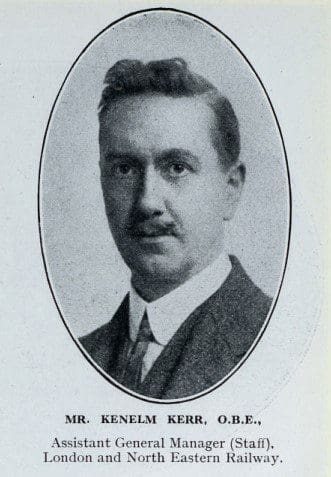

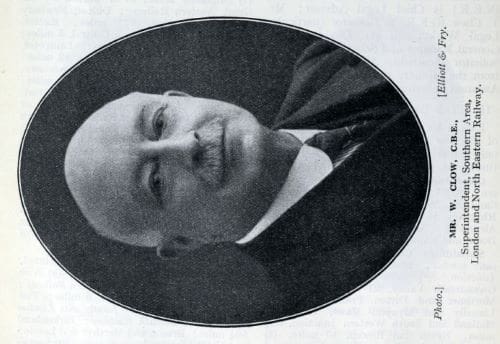
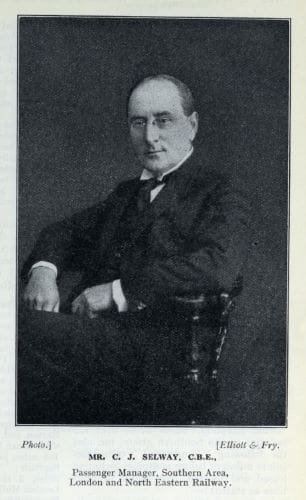
III.—THE GREAT WESTERN RAILWAY.
Except for certain steps, the formation of the new Great Western Railway, the only name from the past which is continued, is practically completed.
Constituent Companies.-Great Western, 3,005 miles; Barry, 68 miles; Cambrian, 295¼ miles; Cardiff, 11¾ miles; Rhymney, 51 miles; Taff Vale, 124½ miles; Alexandra (Newport and South Wales) Docks and Railway, 10¼ miles.
Subsidiary Companies.-(a) Independently worked: Brecon and Merthyr Tydfil Junction, 59¾ miles; Burry Port and Gwendreath Valley, 21 miles; Cleobury, Mortimer and Ditton Priors, 12 miles; Llanelly and Mynydd Mawr, 13 miles ; Midland and South Western Junction, 63¼ miles ; Neath and Brecon, 40 miles.
(b) Semi-Independent lines: Worked by Great Western Railway but possessing separate rolling-stock, &c. : Port Talbot Railway and Docks, 35 miles ; Rhondda and Swansea Bay, 29 miles.
(c) Non-Working Companies: ( 1) Originally leased to or worked by the Great Western Railway: Didcot, Newbury and Southampton, 42¾ miles; Exeter, 8¾ miles ; Forest of Dean Central, 5 miles ; Gwendreath Valley, 3 miles; Lampeter, Aberayron and New Quay Light, 12 miles; Liskeard and Looe, 9 miles; Princetown, 10½ miles; Ross and Monmouth, 12½ miles; Teign Valley, 7¾ miles; West Somerset, 14½ miles. (2) Originally leased to or worked by the Taff Vale Railway: Penarth Extension, 1¼ miles; Penarth Harbour, Dock and Railway, 9¼ miles. (3) Originally leased to or worked by the Cambrian Railways: Mawddwy, 6¾ miles; Van, 6¾ miles; Welshpool and Llanfair Light, 9¼ miles; Wrexham and Ellesmere, 12¾ miles. (4) Originally leased to or worked by the Port Talbot Railway and Docks : South Wales Mineral, 13 miles. (5) Originally leased to or worked by the Barry Railway: Vale of Glamorgan, 20¾ miles.
Joint Railways (total mileages stated, shares thereof included above).-(a) Now comprised wholly in the Great Western Railway : Quaker’s Yard and Merthyr, 6 miles; Taff Bargoed, 11 miles.
(b) Jointly with London Midland and Scottish Railway : Birkenhead 56½ miles ; Brecon and Merthyr and London and North Western Joint, 6 miles; Brynrnawr and Western Valleys, 1¼ miles; Clee Hill, 6 miles ; Clifton Extension, 9 miles; Great Western and Great Central, 41 miles; Halesowen, 6 miles; Nantybwch and Rhymney, 3 miles ; Severn and Wye, 39 miles ; Shrewsbury and Hereford, 82¾ miles; Tenbury, 5 miles; West London, 2¼ miles; Wrexham and Min era, 3 miles.
(c) jointly with London Midland and Scottish and Southern Railways: West London Extension; 5¼ miles, quarter share.
(d) Jointly with Southern Railway : Easton and Church Hope, 3½ miles; Weymouth and Portland, 5½ miles.
(e) Jointly with Metropolitan Railway : Hammersmith and City, 3 miles.
(f) Jointly with Great Southern and Western Railway (Ireland): Fishguard and Rosslare Railways and Harbours, 107 miles.
Principal statistics consequent upon the grouping are : route mileage, 3,800 ; track mileage (including sidings), 8,750; tender locomotives, 1550; tank engines, 2,500 ; coaching vehicles, 10,100; freight vehicles, 90,000 ; service vehicles, 9,700 ; electric vehicles, 60 ; rail motor cars, 70. The Great Western Railway also owns 213 miles of canals; 16 turbine and twin-screw steamers, besides several smaller vessels; docks, harbours, &c., at Barry, Cardiff, Fishguard, Newport, Penarth, Plymouth, Port Talbot, and other places; and ten modern hotels, mostly of large size. The directorate (25), consists of the following gentlemen :-From the Great Western Railway: Rt. Hon. Viscount Churchill, G.C.V.O. (Chairman); Sir S. Ernest Palmer, Bart. (Deputy-Chairman); Hon. Lord Barrymore ; Messrs. F. Bibby, C.B.E., and T. R. Bolitho ; Sir A. Brocklebank, Bart; F. W. Grierson, J.P. ; Rt. Hon. Lord Inchcape, G.C.M.G., K.C.S.I., K.C.I.E. ; Mr. J. F. Mason; Rt. Hon. F. B. Mildmay; Mr. C. Mortimer; Sir H. B. Robertson ; J. Shaw, K.C. (also Alexandra Docks) ; Mr. G. A. Wills; Rt. Hon. J. W. Wilson, M.P. , Sir W. W. Watkins-Wynn, Bart, C.B., and Lieut.- Col. Sir H. A. Yorke, C.B. (also Alexandra Docks). From the Barry Railway: Rt. Hon. the Earl of Plymouth, P.C. From the Cambrian Railways: Lieut.-Col. David Davies, M.P. (also Barry Railway). From the Cardiff Railway: Lord Glanely (also Rhymney Railway). From the Rhymney Railway: Mr. w·. Heward Bell. From the Taff Vale Railway : Mr. G. Birkley Forrester. From the Alexandra (Newport and South Wales) Docks · and Railway : Sir H. Mather-Jackson, Bart, C.B.E. (also Rhymney Railway).
Most of the new appointments have already been set forth in the RAILWAY MAGAZINE, as they were made on various dates during 1922, and no important changes have now to be recorded. As regards the chief officers, considering only those coming from the railways brought into the Great Western, Mr. J. H. Vickery, General Manager, Alexandra Company, is now Chief Docks Manager, Great Western Railway, and among the officers from the Welsh systems now holding positions in that department are Messrs. C. S. Page (Cardiff), W. G. Phillips (Alexandra Docks), F. Brown (Alexandra Docks), W. Cleaver (Port Talbot), and M. C. Harrison (Barry Railway). Mr. W. Waddell, General Manager, Barry Railway, has become Docks Assistant to the Chief Engineer, Great Western Railway, and Mr. J. Auld, Mechanical Engineer, Barry Railway, Docks Assistant to the Chief Mechanical Engineer, Great Western Railway. On the operating side, in the newly-formed Cardiff Valleys Division, Mr. E. H. Dannatt (Taff Vale) is Divisional Superintendent , Mr. C. T. H. Riches (Rhymney) Divisional Locomotive Super-intendent; and Mr. P. A. Collins (Taff Vale), District Goods Manager. Similarly, Mr. H. Warwick (Cambrian), is now District Traffic Manager, Central Wales Division, with headquarters at Oswestry.
IV.—THE SOUTHERN RAILWAY.
This company, which takes over the railways of the Southern group, includes the following “Constituent” companies (route mileages before grouping, including leased and worked; and shares of joint lines as stated) :-
Constituent Companies.- London and South Western, 1,020½ miles; . London, Brighton and South Coast, 457 ¼ miles ; London, Chatham and Dover ; South Eastern ; South Eastern and Chatham Railways, Managing Committee, 637¾ miles.
Subsidiary Companies.-(a) Independently operated lines: Freshwater, Yarmouth and Newport (Isle of Wight), 12 miles; Isle of Wight, 15¼ miles ; Isle of Wight Central, 28½ miles. Also the Bere Alston and Callington section (9¾ miles) of the Plymouth; Devonport and South Western Junction Railway.
(b) Non-Working Companies : (1) Originally leased ·to or worked by the London and South Western Railway: Bridgewater, 7 ¼ miles ; Lee-on-the-Solent, 3 miles; North Cornwall, 52½ miles; Plymouth and Dartmoor, portion used by London and South Western Railway, 2¼ miles; Plymouth, Devonport and South Western Junction Railway (except Bere Alston and Callington section, see above), 19½ miles ; Sidmouth, 8¼ miles. (2) Originally leased to or worked by the London, Brighton and South Coast Railway : Brighton and Dyke, 4¾ miles; Hayling, 5 miles. Also the Victoria Station and Pimlico, the Great Western and London and North Western Railways also being parties to the lease or working arrangement. (3) Originally leased to or worked by the South Eastern or London, Chatham and Dover Railways: London and Greenwich, 3¾ miles; Mid-Kent (Bromley to St. Mary Cray), 2½ miles.
In addition, the Lynton and Barnstaple Railway, though not covered by the Railways Act, 1921, has been absorbed by the London and South Western Railway, and therefore forms part of the Southern Railway. Length is 19¼ miles.
Joint Railways (total mileages stated, shares thereof included above).-(a) Now comprised wholly in the Southern Railway: Croydon and Oxted, 12½ miles; Dover and Deal, 8½ miles ; Epsom and Leatherhead, 3¾ miles ; Portsmouth and Ryde, 8½ miles ; Tooting, Merton and Wimbledon, 5¾ miles ; Woodside and South Croydon, 2½ miles.
(b) In association with other companies : East London, 5 miles, three shares with London and North Eastern, Metropolitan and Metropolitan District one share each; Easton and Church Hope, 3½ miles, jointly with Great Western; Somerset and Dorset, 105 miles, jointly with London Midland and Scottish; West London Extension, 5¼ miles, 2 shares with Great Western and London Midland and Scottish, 1 share each ; Weymouth and Portland, 5½ miles, jointly with Great Western.
Combined mileage and rolling-stock of the new system is as follows :-Route mileage, 2,200; track mileage, including sidings, 5,400; tender locomotives, 1,240; tank engines, 1,150 ; coaching vehicles, 10,800; freight vehicles, 37,500 ; service vehicles, 2,280 ; .electric vehicles, 460 ; rail motor cars, 14. The new company owns 38 large turbine or other steamers, and a number of smaller vessels ; 3½ miles of canals ; docks, harbours, &c., at Southampton, Newhaven, Plymouth, Littlehampton, Folkestone, Dover, Wliitstable, Strood, Rye, Queenborough, Port Victoria, &c. ; and 10 large and well-known hotels.
So far no announcement as to the chief officers and the new organisation has been made, except that Mr. J. J. Brewer is Secretary and Mr. W. Bishop, Solicitor, while, for the time being, the three chief component railways will continue to be managed as heretofore. The new directors (21), as appointed by the ” constituent ” companies are: From the London and South Western Railway, Sir Hugh Drummond, Bart, C.M.G. ; Rt. Hon. Sir Evelyn Cecil, G.B.E., M.P. ; Rt. Hon. Lord Clinton; Mr. R. Holland-Martin, C.B. ; Rt. Hon. Sir George H. Murray, G.C.B., G.C.V.O.; Sir Charles Owens, C.B.; Sir Owen Philipps, G.C.M.G. ; Rt. Hon. Viscount Pirrie, K.P. From the London, Brighton and South Coast Railway: Messrs. F. Dudley Docker, C.B., Gerald W. E. Loder and C. J. Lucas; Sir C. L. Morgan, C.B.E. ; and Sir Robert Turnbull, M.V.O. From the South Eastern Railway: Brig.-Gen. the Hon. Everard Baring, C.V.O.; Messrs. E.W. Mellor and W. Mewburn ; Sir D. L. Salomans, Bart. ; and Mr. C. Sheath. From the London, Chatham and Dover Railway: Sir Vincent Caillard ; Sir Francis Dent, C.V.O. ; Sir George Younger, Bart.
Far-reaching changes such as those indicated naturally involve a great many retirements, though to some extent these are really nominal for the time being, quite a number of chief officers who have officially retired being still actually in office, to cover the problems of the transition period and “handing over.” Others will probably retire when further progress is made with the final organisations, certain appointments above set forth being admittedly of an interim nature.
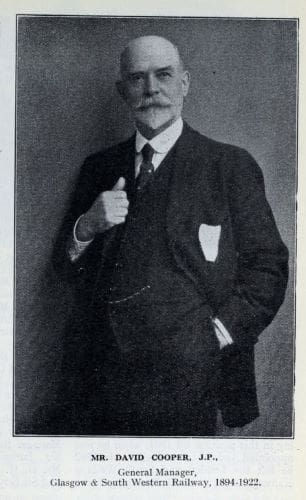
One of the most interesting personalities who now relinquish the reins of office is Mr. David Cooper, General Manager of the Glasgow and South Western Railway for the long period of 25 years, completing 55 years of railway service. The Glasgow and South Western Railway first assumed its title in 1851, on the amalgamation of several constituent companies, so that Mr. Cooper’s connection with the company has lasted through 55 of the 71 years of its existence. He began life as a parcels clerk at the little country station of his native place, Waterside, Ayrshire. Two years apprenticeship at Waterside was followed by three years of further experience at Maybole, and we find him transferred in 1872 to the Office of the Superintendent of the Line at the old Bridge Street terminus-four years before St. Enoch was opened. During the 12 years that followed, and the succeeding five as chief assistant to the General Manager, he gave such signal tokens of administrative ability, initiative, and thorough grasp of detail, that his appointment in 1889 as Superintendent of the Line was inevitable. Five years later, at the early age of 39, he became General Manager. The last three decades have seen much labour unrest; the comparative quietness on the Glasgow and South Western Railway has been due, in no small degree, to the tact and understanding of a manager who himself rose from the ranks. During the war, Mr. Cooper held the rank of Lieutenant-Colonel, Railway Engineers and Staff Corps, and had the honour of being presented to His Majesty the King. Mr. Cooper has been Chairman of the Superintendents’ and General Managers’ Conferences of the Railway Clearing House. He is a Justice of the Peace of the County of Glasgow and of the County of Renfrew.
SIR SAM FAY, General Manager, Great Central Railway, was born at Southampton in 1856, and commenced his railway· career as a junior clerk in the Traffic Department of the London and South Western Railway in 1872. In 1884 he was removed to the Traffic Superintendent’s Office at Waterloo as second clerk, and ten months later appointed chief clerk to the Superintendent of the Line, remaining in this position till 1891, when he was appointed Assistant Storekeeper. In 1892 he left the London and South Western Railway to be General Manager of the Midland and South Western Junction Railway. This position he held until his return to the London and South Western Railway as Superintendent of the Line in April, 1899. In March, 1902, he became General Manager of the Great Central Railway. He was elected Chairman of the General Managers’ Conference of the Railway Clearing House for 1911. On the occasion of the opening of Immingham Docks by His Majesty the King in July, 1912, a knighthood was conferred in recognition of his services. Early in 1917, Sir Sam Fay was appointed to the control of military and munition movements in Great Britain in connection with the Department of Military Railways. In March, 1918, he was made Director-General of Movements and Railways, with a seat on the Army Council.
MR. FRANK TATLOW, C.B.E., General Manager, Midland Railway, was for many years Principal Assistant to the General Manager, Midland Railway. Mr. Tatlow was appointed during the latter months of 1915 to a new position as Assistant General Manager. On the retirement of Sir Guy Granet at the end of 1918, Mr. Tatlow was appointed General Manager. Mr. Tatlow was associated with the General Manager’s Department from the time when he entered the Company’s service as a boy. He has the distinction of having been personally connected with every General Manager the Midland Railway has had –Sir James Allport, Mr. John Noble, Mr. G. H. Turner, Mr. John Mathieson, and Sir Guy Granet.
Don’t forget to check out our BIG subscription saving here and never miss a bit of history!
Advert




